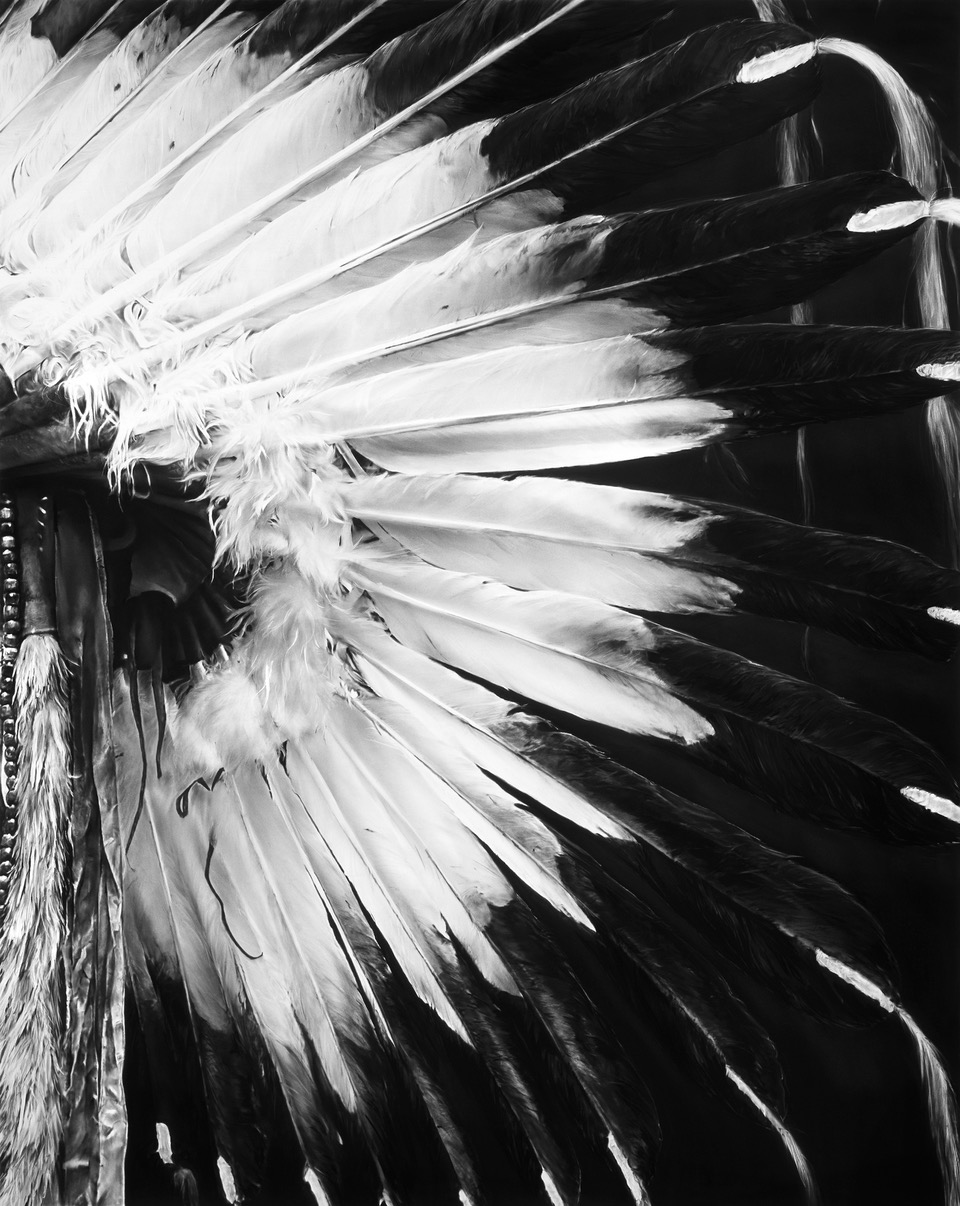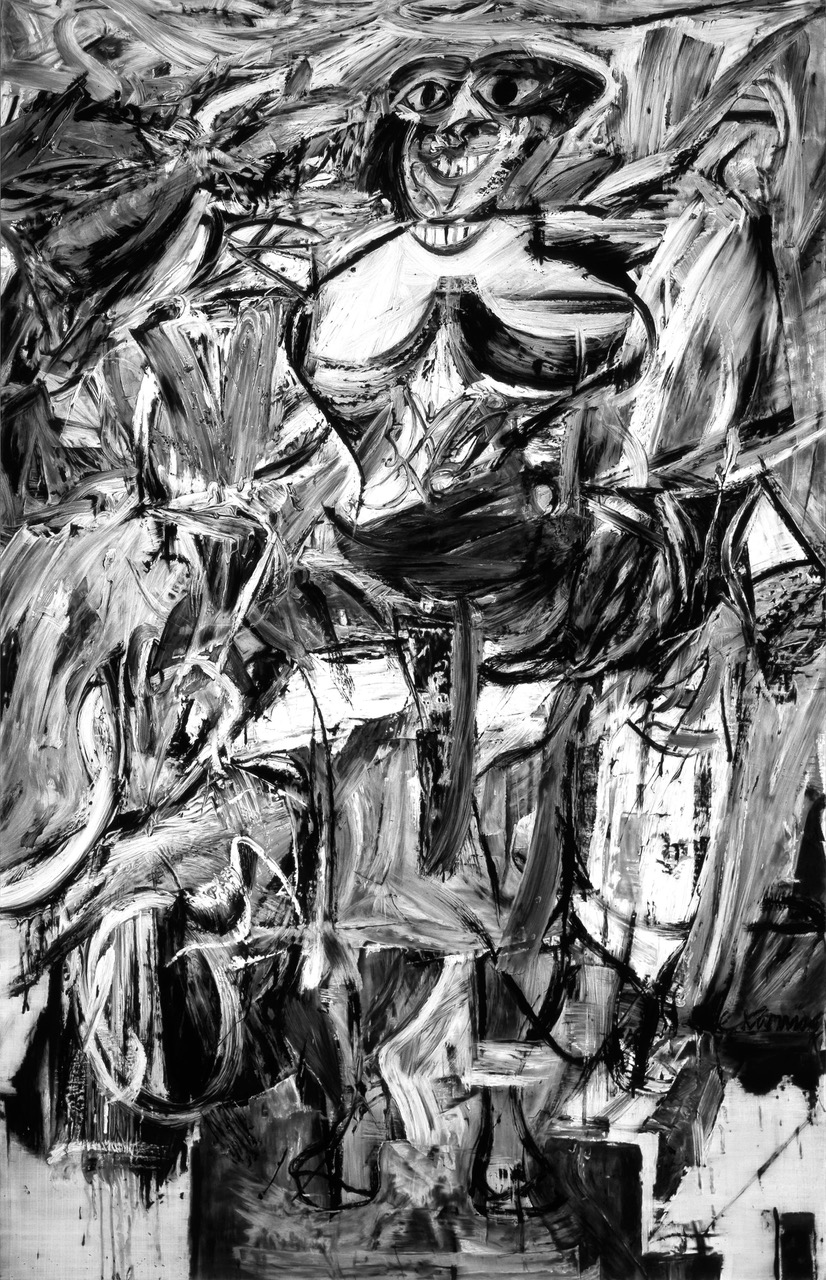Last year, Robert Longo, like so many of his New York City peers, was a full-time resident in his weekend house here, improvising studio space in a basement, which he called “a storm of chaos,” while he waited to move into another house in Northwest.
In the midst of the pandemic, he was organizing “All for the Hall,” a benefit exhibition for Guild Hall, recruiting his friends to donate work and finding an eager artistic community ready to give back when it was so urgently needed.
After shows that opened in between lockdowns in Los Angeles and Germany, he is preparing the exhibition of his work at Guild Hall originally planned for the summer of 2020 but postponed until some degree of normalcy returned. “Robert Longo: A History of the Present,” taking up the museum’s main galleries, brackets the American experience from the postwar period up to current events.
The first gallery is devoted to “Gang of Cosmos,” a series of acutely and fiercely rendered iterations of important Abstract Expressionist paintings in charcoal on mounted paper in a monumental scale similar to the originals. It is a series he actively worked on from about 2012 to 2014. “The Agency of Faith,” in the second room, questions the recent past and the historical narratives relied on to justify policies of repression and environmental degradation.
“I think it’s really important as an artist that you can balance things that are highly personal with things also that are socially relevant,” Longo said by phone from his studio in New York City. “You have to tune in to that balance between those two things, for sure.”
’I took these highly, very personal kind of paintings and turned them into copies, which is a kind of an inverted version of everything. . . . In a weird way, this body of work is a quintessential Pictures Generation show. It’s pictures of pictures.’
Even in a form known for its highly personal nature, he was inspired as well by politics and history in taking on the New York School.
“There were a lot of reasons I did these originally. It was at the time that Obama was running for re-election against Romney. And at the same time there was a lot of young abstract painting that was happening — very anti-intellectual, anti-political, and highly process-oriented.”
He imagined that if Romney won, “that would be the art for the next 20 years. And I thought I might as well go back and look at the original guys, because a lot of times that kind of abstract art, to me, looks like bad versions of these earlier artists.”

Not all of Longo’s original works were available, including key drawings after Robert Motherwell and Jackson Pollock, so he made new ones over the past year. The Pollock, now in Germany, was too large to fit in Guild Hall. “And I desperately needed a Pollock in the show.” He noted that on his first date with his partner, Sophie Chahinian, they went to Pollock’s grave and his studio. “So that was really important.”
Often denigrated for the forced machismo and outright misogyny of its male artists, the Abstract Expressionists and their reputation have been rehabilitated a bit by the female members of the group, who have re-emerged over the last decade in important shows of their work. Indeed, artists like Helen Frankenthaler, Lee Krasner, and Joan Mitchell were part of Longo’s series from the beginning.
A Krasner painting is the first reproduction you will see in this gallery. “I remember reading how she was so pissed off at all the Ab-Ex guys who were trying to establish a signature image. She thought it was stupid to waste your time to do that, that as a woman her life was much too complicated to be associated with one image. I thought that was really kind of cool. She was heroic in the way she worked, for sure.”
He admitted that all of the artists whose work he recreated are heroes to him and have inspired him in many ways, particularly the monumental scale he chooses for his own works. He noted that the murals they painted for the Works Progress Administration probably influenced the scale of their works. Then, there’s the old joke that in America, “if it’s big, it’s good,” he added.
Coming from a central figure in the Pictures Generation, there are inherent ironies present. “I took these highly, very personal kind of paintings and turned them into copies, which is a kind of an inverted version of everything. . . . In a weird way, this body of work is a quintessential Pictures Generation show. It’s pictures of pictures.”
The process of recreating the paintings became all-consuming. He hired an art historian to dive deeper into their meaning, took hundreds of color photos of each work, and placed them all over the studio “like a forensic site.”
Getting the subtle tonality of each color right while working in charcoal was extremely important. “A lot of times, when you see black-and-white photos of these paintings, it’s quite arbitrary. It tends to, like, make a dark red and dark blue look like the same color. So I was trying to make these highly sensitized translations.” At the same time, he realized that the first time he saw a lot of this work was in the form of black-and-white reproductions.
‘The speed with which we see images in the world and how quickly we forget them is really kind of a tragedy.’
Then there is the prodigious amount of work involved and the manifest differences between the time it takes to make a brushstroke and how long it takes to draw one. “All those kinds of relationships, I really got into it so much.”
Longo also began to understand each artist’s process more intimately. “Like Joan Mitchell, I could see that her paintings were like knife fights. They were so aggressive.” Yet he noted she often couldn’t reach the top of her canvases and would leave those areas blank. “Right where she was standing though, it’s really, really quite intense.”
That intensity will continue in the other gallery. There, images from the more recent past will be treated to the same thoughtful and labored image construction, designed to make the viewer slow down and really see the work and its content, instead of merely recognizing it and moving on.

“The speed with which we see images in the world and how quickly we forget them is really kind of a tragedy.” He said he wanted to “rip them out of that storm and make them become memorable, iconic images.” Leaving behind the faithfulness he applied to the Ab-Ex paintings, “I’ve manipulated them. They’re not based upon the original. I’m trying to make the perfect version of these images in that sense.”
Geared toward “history and protest and environment and responding to those issues,” the subject matter is similar to what he had been doing before, but it’s shifted away from the “basic balls-out outrage of what was happening politically” during the Trump administration.
Last year, Longo predicted a very dark show in this room depending on what happened in the intervening months. This year, he is more optimistic in the approach to his work. “It’s not quite as aggressive as it used to be, which I think is good. Because I’m somewhat hopeful. And I think that I want there to be a bit of hope in the show. Not so head-banger, ‘wake the fuck up’ kind of stuff. We have to look forward now and take care of things.”
In looking at what needs to be done, he is “well aware that I’m an old white man and white guys are pretty much responsible for a lot of pain in this world.” As much as there are efforts to change and improve things, “a lot of white guys are trying to hold on hard to this John Wayne mentality, but shit’s going to change and it’s happening now.
In the “Agency of Faith” room, there will be a “complex situation where a triangle exists between the George Floyd protests — where there’s a guy who has a flag, walking into a city that is burning — and it relates to an image of a cotton field and also relates to an image of a close-up detail of an American Indian headdress. It’s like the American scene right there.”
Drawings of a jellyfish and a dead bird on the ground allude to the environment, as does a giant wave from another abandoned series that Longo revisited for this show. Growing up, he used to surf in Montauk during hurricanes. “The thing about the waves, they weren’t like the waves you saw in Hawaii that were all glassy and beautiful.” These East Coast waves were “nasty and dirty waves. This drawing is a bit like that. It’s kind of really dirty and nasty. I like that."
The wave may be nasty in real life, but he still makes it a thing of beauty. “I’m pretty much a classically trained guy. I spent an enormous amount of time working on the composition of these pieces.” He is not merely making drawings of photographs. “I piece them together and try to find a way to make the work become more than it is, something that somehow becomes a memory.”
What inspires him is “believing in something. I take a chunk of my life to make these works because I believe in them. . . . All these works are really labors of love.”
“Robert Longo: A History of the Present” opens to the public on August 7 and will be preceded by Guild Hall’s annual gala celebrating the exhibition on the evening of August 6. As planned, it is a return to galas of yore with an exhibition preview, and cocktails, dinner, and dancing at a private residence.
